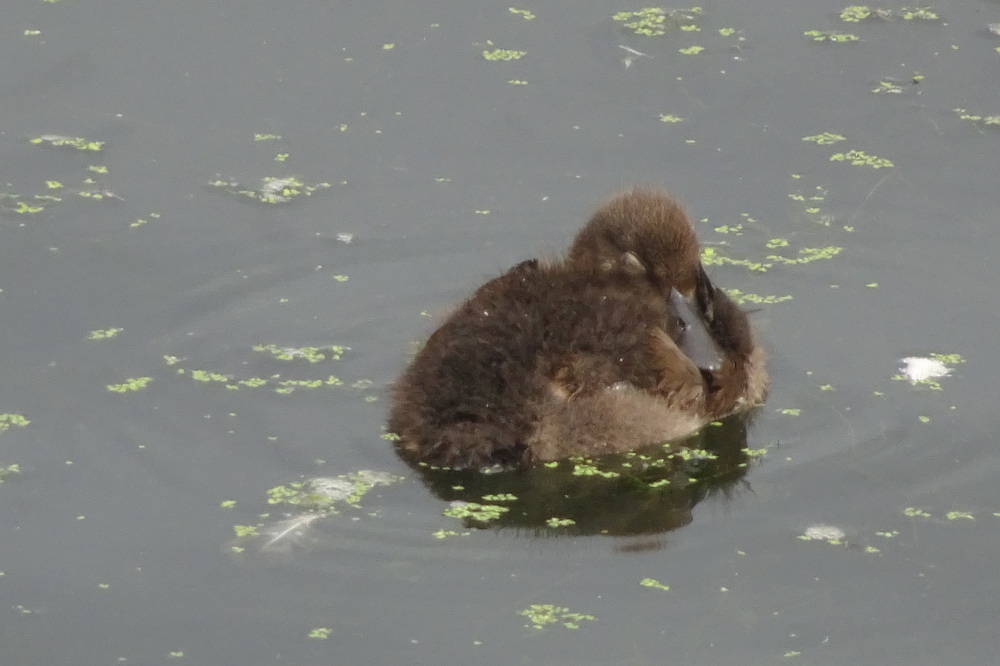Results

From Russia to Spain - holiday destinations of our birds
The pick of the recoveries and controls notified to us during 2016. Friends of the Group receive full details in the bimonthly Bulletin - take a look here if you are interested in becoming a Friend.
The best of our wildfowl movements were from a Tufted Duck and a Gadwall. These well demonstrate the analysis by Alan Harris in his excellent articles in our 20th Report (free to Friends of the Group).
The Tufted Duck was ringed as a duckling in August 2013, and was shot in May 2016 in Komi, in the Russian Federation, some 3431km to the east-north-east, and so presumably breeding there. It seems that female Tufted Ducks are likely to breed where they themselves were fledged, whereas males pair up on the wintering grounds and then accompany the female back to their breeding ground. Thus although we don’t know the sex of this particular duck, it is likely to be a male that paired with a Russian female (Tufted Ducks from northern Eurasia may come to UK for the winter) and then went back to Russia with her.
The Gadwall was also ringed as a duckling in August 2013, and was shot in November 2015 in Manche, France, some 340km to the south-south-west. This also fits the pattern of British bred birds moving a little south for the winter.
The establishment and growth of our Black-headed Gull colony has led to some interesting records. Chicks ringed in 2013 and 2014 have been seen at Rye Meads and their rings read in the field both in April 2016. Does this indicate site fidelity with these birds returning to breed where they were reared?
They may not go that far to winter either; a chick from 2014 was field-sighted in February 2016 at Rollesby Broad, Norfolk.
We’ve also had a fascinating series of sightings of a colour-ringed bird first ringed in Ijsselmeerpolders in The Netherlands as an adult male in June 2012, and so presumably breeding there. He was first sighted at Rye Meads in November 2012, presumably en route to his wintering grounds, and was then sighted back at his breeding colony throughout March and April 2013. He was next seen in March and April 2014 back in Ijsselmeerpolders, and then at Rye Meads again in September of that year. In March and April 2015 he was back in Ijsselmeerpolders, and also in March and April 2016, then sighted again at Rye Meads in August 2016. We await any further developments! Thanks are due to Frank Majoor for his studies of the gull colonies there.
Now for some results of the Autumn netting of hirundine roosts. Young Swallows ringed here have been caught during the following summer in Highland, Scotland and in Northamptonshire, in both cases doubtless breeding locally. Continuing the Scottish theme, a youngster ringed in Perth & Kinross was caught at Rye Meads the following year. A juvenile Swallow from Tollesbury, Essex was caught in our roost just a month later, but a juvenile from Wiltshire, caught in September 2015 and so possibly on passage by then, turned up at Rye Meads a year and a day later. Does this suggest it had been breeding further north and perhaps more easterly than where it was itself brought up?
We’ve had another interesting batch of warbler recoveries notified to us during 2016.
These included three Sedge Warblers all controlled in August in Loire-Atlantique, France, and another in Guipúzcoa, Spain in September; each of these reflects typical passage routes for this species. In reverse, a Sedge Warbler ringed in Finistère, France, and so presumably on passage south, was controlled at Rye Meads the following April. Had it reached its breeding ground or was it still moving north? Yet another juvenile Sedge Warbler was ringed at Orford Ness on the Suffolk coast in August 2016 and was then controlled at Rye Meads just three days later; not moving in the right direction for migration, it was perhaps still showing juvenile dispersion behaviour – exploring the area around where it was hatched before setting off for Africa. This kind of behaviour is what enables species like this to find new breeding grounds. More typical was the adult ringed in Nottinghamshire in August and caught at Rye Meads nineteen days later, obviously a bird starting to move but in no hurry.
Now some Reed Warblers: first a juvenile from the beginning of August, controlled a year later at Maine-et-Loire, France; then an adult in June, obviously breeding here, controlled in Charente-Maritime, France in August – two birds demonstrating the southerly route to Africa. Lastly a juvenile Reed Warbler showing remarkably similar movement to the dispersing Sedge Warbler above, moving from Minsmere on the Suffolk coast to Rye Meads in nine days.
An interesting Blackcap movement was a Belgian bird, ringed at the beginning of May, and controlled here in mid July. We believe the Blackcaps that breed here winter typically in Iberia or North Africa, so perhaps this bird was aiming for Rye Meads but found itself off course?
We think our breeding Chiffchaffs have similar wintering grounds. Hence the juvenile ringed in September and controlled in Charente-Maritime 23 days later; the juvenile ringed in October that was controlled at Titchfield Haven in Hampshire four days later also fits this model. As does our most curious recovery of the period: a juvenile ringed in 2004, of which just the ring was recovered, seized from an illegal hunter in Sevilla, Spain in 2015, so we don’t know exactly where it was found, or when, but clearly had reached Spain.
Our wintering Chiffchaffs however we believe come from northern Britain and northern Europe. Fitting this pattern is the bird ringed in December 2015 which hit a window and died in Vejle, Denmark the following April.
Finally a couple of finch and bunting movements. Firstly a young Lesser Redpoll ringed in October 2015 and controlled in Brabant, Belgium 48 days later: it is hard to speculate on its origins or planned wintering grounds from this movement. Lastly, a Reed Bunting ringed as a nestling in May 2011 which hit a window but recovered and was later released in March 2016 at Risby in Suffolk, at five years a decent age for a small passerine.
It is always fascinating to find out a bit more about where our birds come from or go to when not at Rye Meads – it is what helps to make the hard work of regular trapping and ringing worthwhile.
